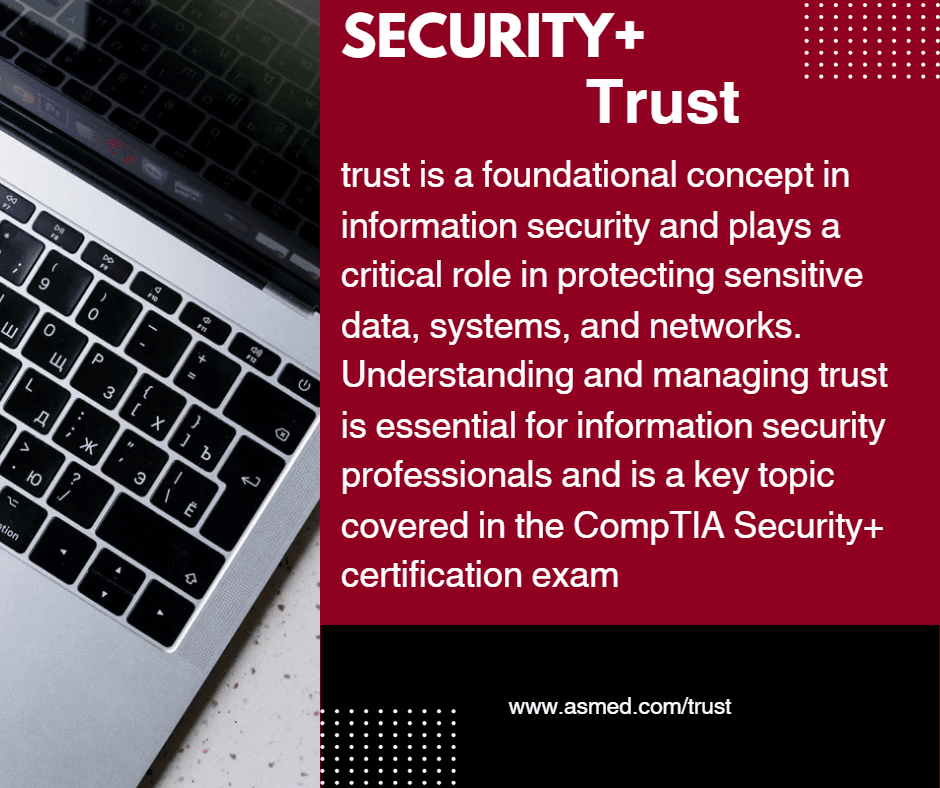Understanding Trust in Information Security
As technology continues to evolve and the reliance on digital systems and networks increases, trust has become a crucial aspect of information security. Establishing and maintaining trust is essential in protecting sensitive data, ensuring the integrity of systems, and mitigating security risks. In this comprehensive guide, we will delve into the concept of trust in the context of CompTIA Security+ certification and explore its key components and implications.
Authentication: The Foundation of Trust
At the heart of trust in information security is authentication, the process of verifying the identity of a user, device, or system. Authentication methods can include something a user knows, something a user has, or something a user is. We will explore various authentication methods, such as passwords, smart cards, and biometric recognition, and discuss best practices for implementing strong authentication mechanisms.

Authorization: Determining Access Rights
Once a user, device, or system has been authenticated, authorization comes into play. Authorization determines what actions or resources an authenticated entity is allowed to access. We will delve into the concept of authorization, including role-based access control (RBAC) and other authorization models, and discuss how to implement effective authorization mechanisms to prevent unauthorized access and data breaches.
Trust Models: Establishing Trust Relationships
Trust models are frameworks used to establish and manage trust between different entities in a system or network. We will explore common trust models, such as single sign-on (SSO) frameworks, multi-factor authentication (MFA) systems, and public key infrastructure (PKI) implementations. We will discuss their strengths, weaknesses, and best practices for implementation to ensure secure and trusted interactions between entities.
Trust Boundaries: Managing Interfaces
Trust boundaries are the points or interfaces where different levels of trust meet or interact. Managing trust boundaries is crucial in preventing security breaches and ensuring the integrity of systems and networks. We will discuss how to identify and manage trust boundaries, including considerations for physical and logical boundaries, and best practices for securing these critical points of interaction.
Trustworthiness: Ensuring Reliability and Security
Trustworthiness is the overall reliability, integrity, and security of a system or network. It involves implementing appropriate security controls, maintaining system updates and patches, and following best practices for securing data, systems, and networks. We will explore the concept of trustworthiness and discuss how to implement measures to ensure the trustworthiness of information systems and networks.
Conclusion: Trust as a Pillar of Information Security
In conclusion, trust is a foundational concept in information security and plays a critical role in protecting sensitive data, systems, and networks. Understanding and managing trust is essential for information security professionals and is a key topic covered in the CompTIA Security+ certification exam. By comprehensively understanding the components of trust, including authentication, authorization, trust models, trust boundaries, and trustworthiness, information security practitioners can effectively mitigate security risks and safeguard valuable information assets.
Whether you are a security professional preparing for the Security+ certification exam or an IT practitioner looking to enhance your knowledge of information security, this comprehensive guide on understanding trust in information security will provide valuable insights and practical recommendations for establishing and maintaining trust in today’s complex digital landscape. Trust is a critical pillar of information security, and mastering its concepts is essential for protecting against security threats and ensuring the confidentiality, integrity, and availability of information and resources.







